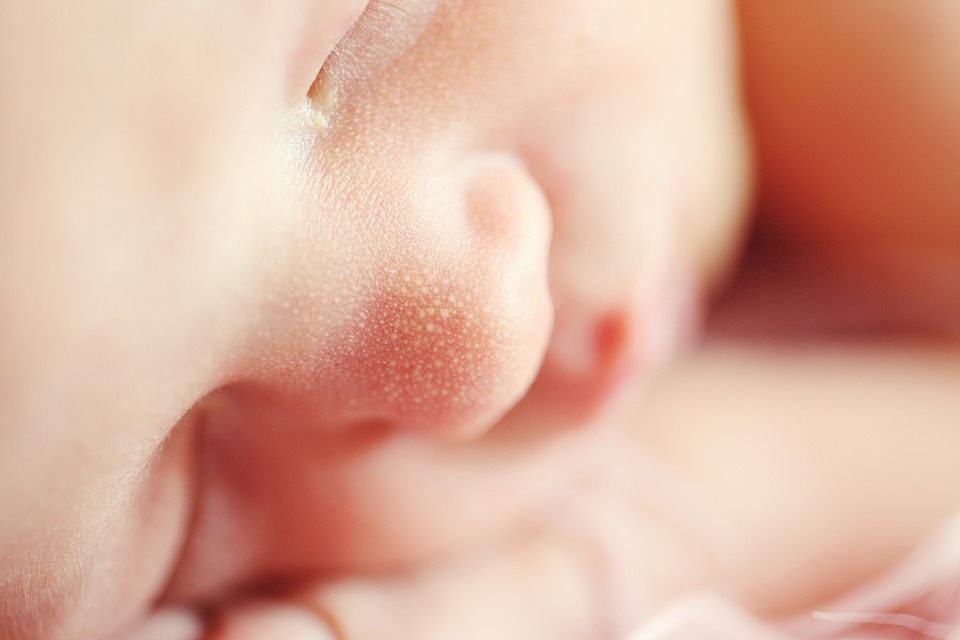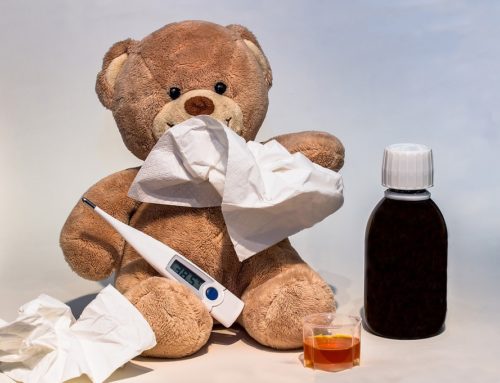Does your new born baby have whitish, yellowish discharge from one or both eyes? Does your infant have a watery eye (or eyes) or has redness or swelling in one or both eyes?
Your baby may have blocked tear duct.
Blocked tear duct in newborn babies
A tear duct is a passage to drain tears from eye to inside of the nose. For some infants, at birth, opening into the tear duct may not be fully developed causing a blockage for tears to flow into the nasal cavity.
Around 20-30% of babies are born with a blocked tear duct. It may be present in one or both the eyes. Blockage of tear duct may be partial or whole. Since tears are not produced until a few weeks after birth, this condition may not be detected immediately at birth.
Symptoms and diagnosis
Typical symptoms of blocked tear duct are:
- Watery eye (sometimes tears may flow down on cheeks)
- Yellowish/whitish discharge from the eye (especially after the baby wakes up from sleep)
- Redness in the white part of the eye
- Swelling of eyelid
These symptoms may be observed all the time or intermittently. In some cases, the weather may make these symptoms more conspicuous (e.g. cold or wind).
If you notice symptoms for block tear duct in your baby, it is best to get it diagnosed by a paediatrician or an ophthalmologist.
Treatment for blocked tear duct
Typically, blocked tear duct clears on its own in few weeks after birth without any treatment. However, for around 50-60% of babies born with blocked tear duct, the blocked tear duct may fully open, without any intervention, in around 6-12 months after birth.
Your paediatrician/ophthalmologist will guide you with exact treatment (based on the severity of the symptoms, possibility of an infection and age of your baby). The most commonly followed treatment is to massage the blocked duct gently. To massage the blocked duct, put your index finger or thumb in the upper nasal corner of the eye and make gentle strokes in the downward direction … repeat this 8-10 times. Perform this massage 3-5 times a day (your medical practitioner can demonstrate how to massage the tear duct). Please carry out this exercise/massage under the guidance of your paediatrician or ophthalmologist!
Whenever there is discharge from the eye, use a clean and soft cloth (or cotton) dipped in sterile (or drinking quality) water and gently remove the discharge.
Once the blocked tear duct is completely healed, it usually does not need any further intervention.
When to seek medical attention for blocked tear duct
If symptoms of blocked tear duct are present beyond 6-12 months, medical intervention may be required.
Seek immediate treatment for nasal congestion or cold in baby, until the blocked tear duct is not completely healed. It is a precautionary measure to avoid nasal region’s infection to inflame/infect the tear duct.
Also, please consult your Paediatrician/Ophthalmologist, if the following symptoms are observed (irrespective of baby’s age):
- Redness of eye continues for more than 24 hours
- Swelling of eyelid continues for more than 24 hours
- Prominent swelling near the inner, upper corner of the eye (where the tear duct is located)
- Discharge is puss like with yellow tint instead of the usual whitish secretion
- Note: It’s okay if redness or swelling of the eye comes and goes with regular massage and cleaning. If swelling/redness persists, it may be a sign of infection and hence should be treated immediately.
An infection may cause these symptoms and should be addressed without delay.
3 surprising conditions in a newborn:
– Don’t panic if a newborn baby has scaly scalp
– Dont panic if your baby spits milk after feeding
– If your newborn looking pale yellow? Know newborn Jaundice symptoms






Leave A Comment